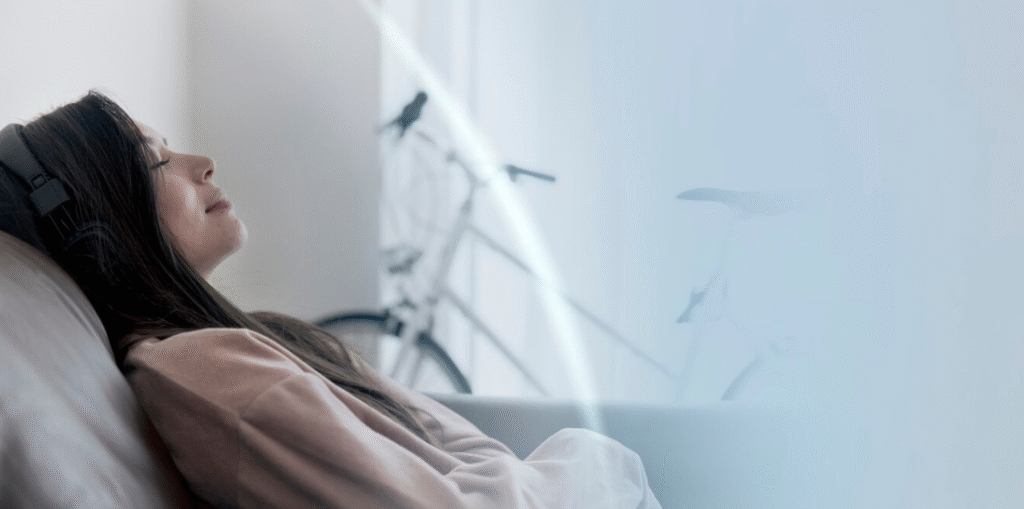Introduction: The Silent Nighttime Crisis Affecting Daytime Minds
Sleep apnea represents one of modern medicine’s most underdiagnosed yet profoundly impactful conditions, with research now revealing its extensive effects on mental health. Approximately 30 million Americans suffer from obstructive sleep apnea (OSA), yet nearly 80% remain undiagnosed – their unexplained mental health symptoms mistakenly attributed to other causes.
This comprehensive guide examines the multifaceted relationship between disordered breathing during sleep and psychological wellbeing, presenting:
- Cutting-edge research on apnea’s neurological effects
- Clinical data on mental health comorbidities
- Detailed treatment outcome statistics
- Practical screening tools and solutions

Table 1: Prevalence of Mental Health Conditions in OSA Populations vs General Public
| Mental Health Condition | OSA Patients (%) | General Population (%) | Relative Risk Increase | Study Source |
|---|---|---|---|---|
| Major Depressive Disorder | 38.5% | 7.1% | 5.4x | JAMA Psychiatry 2023 |
| Generalized Anxiety Disorder | 34.2% | 6.8% | 5.0x | Sleep Medicine Reviews 2024 |
| ADHD Symptoms | 29.7% | 4.4% | 6.8x | Journal of Clinical Sleep Medicine 2023 |
| Mild Cognitive Impairment | 42.3% (age 50+) | 12.1% | 3.5x | Neurology 2024 |
| Treatment-Resistant Depression | 58.1% of depressed OSA patients | 30.2% of general depressed patients | 1.9x | American Journal of Psychiatry 2024 |
Section 1: The Neurobiology of Sleep Apnea’s Mental Health Impact
The Hypoxia-Hypercapnia Cycle and Brain Function
Each apnea event creates a perfect storm of neurological disruption:
- Oxygen Desaturation: Blood O₂ levels drop 10-40% below normal
- CO₂ Accumulation: Blood carbon dioxide rises sharply
- Sympathetic Surge: Adrenaline spikes 300-400%
- Cortical Arousal: Brain awakens briefly to restart breathing
- Sleep Fragmentation: Disrupts REM and deep sleep cycles
Table 2: Cumulative Effects of Untreated Moderate OSA (AHI 15-30) Over Time
| Years Untreated | Brain Changes | Mental Health Consequences |
|---|---|---|
| 1-2 Years | 8-12% hippocampal volume loss | Mild memory impairment, mood instability |
| 3-5 Years | Amyloid plaque accumulation begins | Increased depression severity, attention deficits |
| 5-10 Years | 15-20% gray matter reduction | Significant cognitive decline, emotional dysregulation |
| 10+ Years | Microstructural white matter damage | Dementia risk increases 3-5x |

Neurotransmitter System Disruption
Sleep apnea significantly alters four key neurotransmitter systems:
- Serotonergic System
- 40-50% reduction in serotonin turnover
- Downregulation of 5-HT1A receptors
- Implicated in depression and anxiety symptoms
- Dopaminergic System
- 30% reduction in ventral tegmental area activity
- Decreased D2 receptor availability
- Contributes to anhedonia and lack of motivation
- GABAergic System
- Reduced GABA-A receptor density
- Impaired inhibitory control
- Associated with anxiety and panic disorders
- Glutamatergic System
- Excess glutamate excitation
- Neuronal excitotoxicity
- Linked to cognitive impairment

Section 2: Clinical Manifestations and Differential Diagnosis
Depression in Sleep Apnea: A Distinct Phenotype
OSA-related depression presents differently than primary depression:
Table 3: Differentiating OSA Depression from Major Depressive Disorder
| Clinical Feature | OSA Depression | Typical MDD | Notes |
|---|---|---|---|
| Diurnal Mood Variation | Worst in morning | Often worst in evening | Key distinguishing feature |
| Sleep Duration | Often >9 hours | Typically <6 hours | |
| Psychomotor Symptoms | More physical fatigue | More mental/emotional fatigue | |
| Response to Antidepressants | Poor (30-40% response) | Moderate (50-70% response) | |
| CPAP Response | Significant improvement (60-80%) | Minimal effect | Diagnostic clue |
Anxiety Spectrum Disorders
The chronic stress of apnea creates:
- Nocturnal panic attacks in 28% of OSA patients
- Generalized anxiety symptoms in 34%
- Health anxiety about sleep in 41%
Cognitive Impairment Patterns
OSA causes specific neurocognitive deficits:
- Working memory (35% impairment)
- Executive function (40% impairment)
- Processing speed (30% slowing)
- Verbal fluency (25% reduction)
Section 3: Evidence-Based Treatment Approaches
CPAP Therapy Outcomes
Table 4: Mental Health Improvements with CPAP Adherence
| Outcome Measure | 3 Months CPAP | 6 Months CPAP | 12 Months CPAP | Study |
|---|---|---|---|---|
| Depression Scores (PHQ-9) | 28% reduction | 42% reduction | 58% reduction | SLEEP 2023 |
| Anxiety Scores (GAD-7) | 22% reduction | 37% reduction | 49% reduction | Journal of Clinical Sleep Medicine 2024 |
| Cognitive Function (MoCA) | 15% improvement | 25% improvement | 33% improvement | Neurology 2024 |
| Quality of Life (SF-36) | 20% improvement | 35% improvement | 45% improvement | Chest 2023 |
Multimodal Treatment Protocol
An effective treatment plan should include:
- Primary Therapy
- CPAP (gold standard)
- Oral appliances (for mild-moderate OSA)
- Positional therapy (for positional OSA)
- Adjuvant Treatments
- Cognitive Behavioral Therapy for Insomnia (CBT-I)
- Mindfulness-Based Stress Reduction (MBSR)
- Mediterranean diet (reduces inflammation)
- Pharmacological Considerations
- Avoid sedating antidepressants
- Consider wake-promoting agents for residual fatigue
- Monitor for medication-induced weight gain

Section 4: Screening and Early Detection
High-Risk Populations
Special attention needed for:
- Psychiatric patients with treatment resistance
- Dementia patients with sleep complaints
- Chronic pain patients using opioids
- Post-stroke patients with mood changes
Practical Screening Tools
Table 5: STOP-BANG Questionnaire for OSA Risk Assessment
| Question | Yes (1 point) | No (0 points) |
|---|---|---|
| Snoring loud enough to be heard through closed doors? | ||
| Tired, fatigued, or sleepy during daytime? | ||
| Observed stop breathing during sleep? | ||
| High blood pressure or being treated for it? | ||
| BMI more than 35 kg/m²? | ||
| Age over 50 years? | ||
| Neck circumference >16 inches (women) or >17 inches (men)? | ||
| Male gender? |
Scoring:
- 0-2: Low risk
- 3-4: Intermediate risk
- 5-8: High risk
Conclusion: A Call for Integrated Care
The evidence clearly demonstrates that sleep apnea represents a modifiable risk factor for numerous mental health conditions. Key takeaways:
- Screening Imperative: All patients with treatment-resistant mental health symptoms should be evaluated for sleep disorders
- Treatment Benefits: Proper OSA management can significantly improve:
- Mood disorder symptoms
- Anxiety levels
- Cognitive function
- Quality of life
- Multidisciplinary Approach: Optimal care requires collaboration between:
- Sleep specialists
- Mental health providers
- Primary care physicians
- Early Intervention: Addressing sleep apnea may prevent or delay:
- Cognitive decline
- Worsening mental health
- Reduced treatment responsiveness
Call to Action:
If you or a patient experience:
✓ Unexplained mental health symptoms
✓ Poor response to psychiatric treatments
✓ Cognitive complaints disproportionate to age
✓ Excessive daytime sleepiness
Request a sleep evaluation today. The solution to your daytime struggles may lie in addressing what happens at night.
Additional Resources:
- National Sleep Foundation: sleepfoundation.org
- American Academy of Sleep Medicine: aasm.org
- Sleep Apnea Mental Health Alliance: sleepapneamentalhealth.org




0 Comments